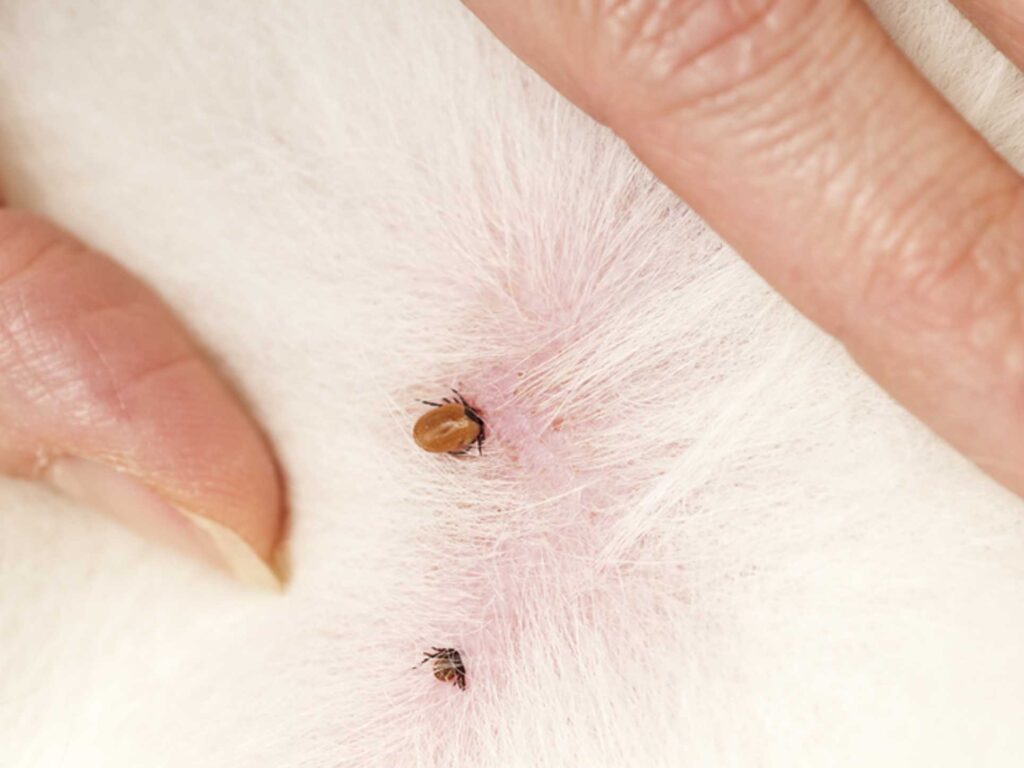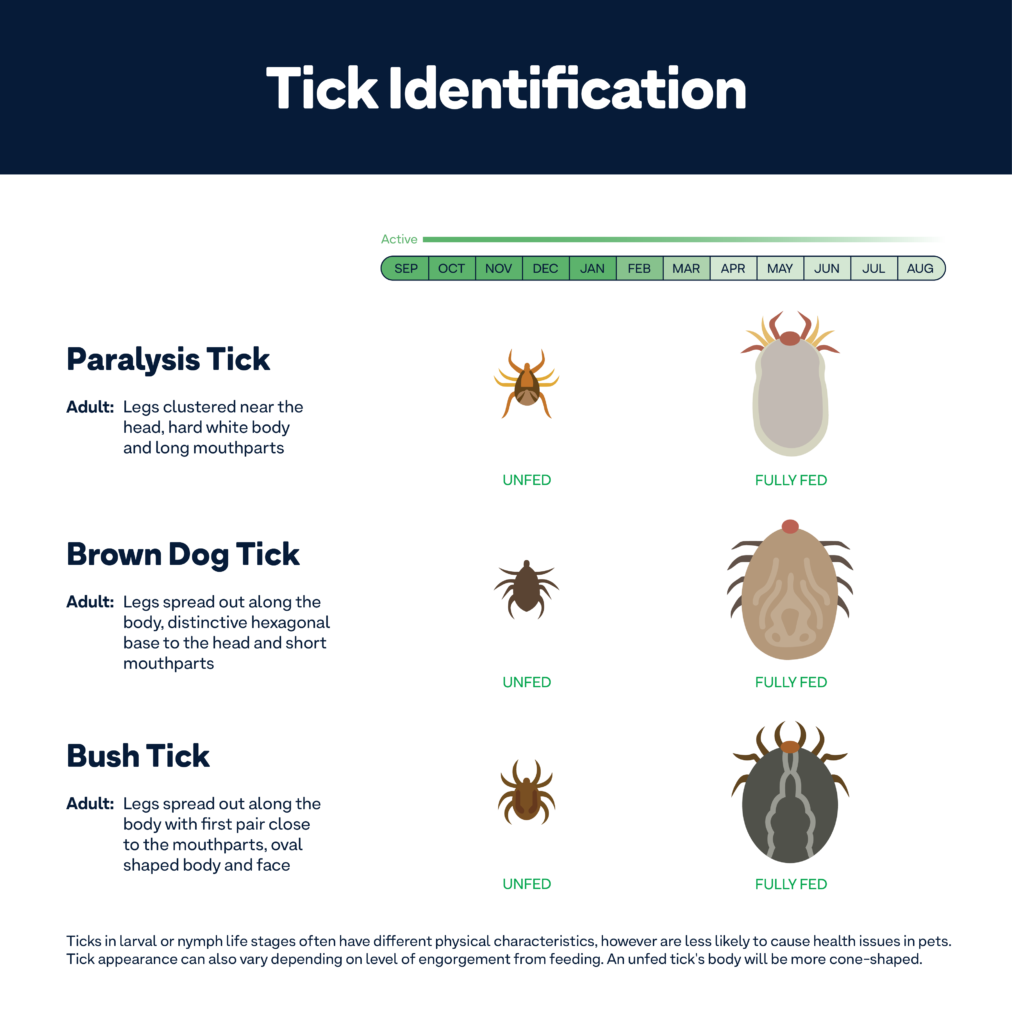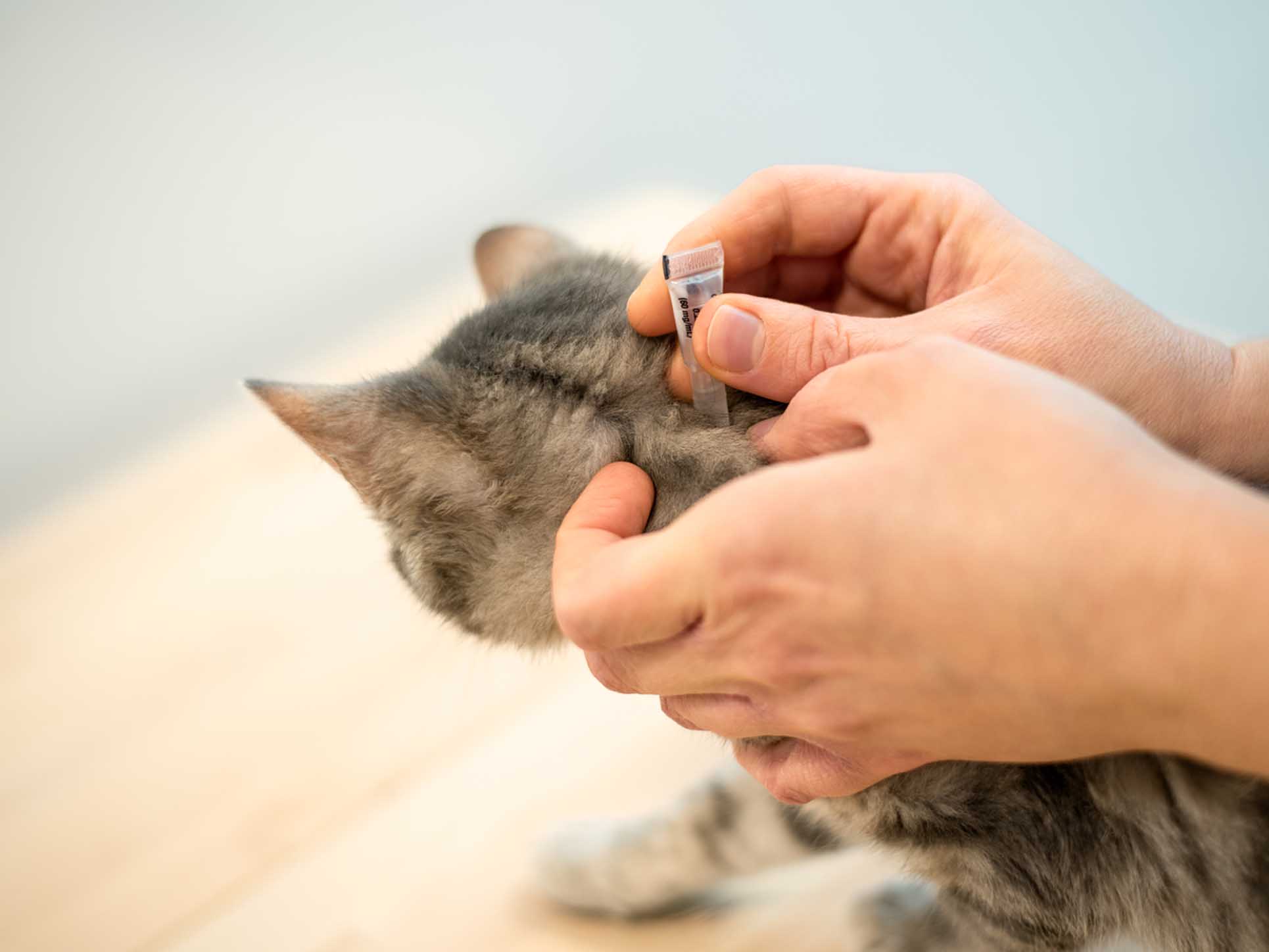Ticks On Cats Guide: Tick Identification & Bite Symptoms
Ticks are one of the most concerning parasites for Australian pet parents. A bite from these tiny arachnids can be fatal to small animals like cats. Fortunately, there is plenty you can do to minimise the risk of tick bites and paralysis in your cat.
What Does A Tick Look Like On A Cat?
Ticks are extremely difficult to find when they first attach to your cat. Sometimes it is easier to feel them with your fingers rather than see them amongst the fur because they are so small.
A tick can look like a brown or grey coloured bump on the cat’s skin, the size varying depending on how engorged (full of blood) the tick is. The area around the tick may be red and/or swollen and you may be able to see the tick’s legs along the sides of its body. It is unlikely that you will be able to see the tick’s mouth as this is inserted under the cat’s skin.
What Type of Ticks Bite Cats?
The types of ticks most commonly found on cats are paralysis ticks and bush ticks. Sometimes brown dog ticks may be found on cats, but they much prefer to bite dogs.
Paralysis Ticks
Paralysis ticks are of most concern because they produce a neurotoxin in their salivary glands. This neurotoxin, which affects the cat’s nervous system, can cause paralysis and death if the tick is not killed by tick preventatives or found, removed and treated quickly.
Paralysis ticks are found in warm, humid regions along the east coast of Australia. They can be identified by their pale bodies when engorged, long mouthparts, and their legs grouped near their mouthpart rather than along their body.
Learn more about paralysis ticks.
Bush Ticks
Bush ticks are less of a concern compared to paralysis ticks. However, if there is a large infestation on the cat, they can cause anaemia. They may cause some skin irritation at the site of the bite and can potentially transmit tickborne diseases, but they don’t produce any harmful toxins.
Bush ticks are mostly found along the east coast of Australia, from Queensland down to Victoria, and look quite different from paralysis ticks when engorged. A bush tick’s body can be reddish brown to blue-black in colour depending on its level of engorgement. Additionally, their legs are spread along the sides of their body rather than grouped around their head.
What Are The Symptoms Of A Cat Tick Bite?
Symptoms that suggest a tick bite include:
- A tick crater – a wound where the tick’s head was attached.
- Swollen, red skin around the area of the bite.
- Itchiness at the site of the bite
- Pale gums due to anaemia if there is a heavy tick infestation.
Because paralysis ticks produce neurotoxins, you might notice the following symptoms in your cat before you see the bite or the tick:
- A change in their meow.
- Weakness, particularly in their hind legs.
- A change in their walk or reluctance to jump
- Dilated pupils
- Difficulty swallowing or pooling saliva
- Difficulty breathing
- Vomiting and regurgitation
If you’re concerned your cat has been bitten by a tick, call your vet immediately. Find your closest Greencross Vets here or your closest after-hours emergency vet here.
How To Check Your Cat For Ticks
You should be performing a tick check on your cat daily, especially if they spend time outside.
Gently run your fingers all over your cat. You’re looking for a bump that is the tick itself or a wound or area of swelling that may be a crater where a tick was previously attached.
Ticks usually prefer to attach to the head, neck, or between the toes but can be found anywhere on your cat. Don’t forget to check in their ears, under their front legs, in their groin area, and even inside their mouth! If you find a tick, immediately remove it, keep it in a zip lock bag, and take your cat to the vet for a check-up, along with the tick for identification.
How To Remove Ticks From Cats
To remove a tick, use either tick removers or your thumb and forefinger to grip it as close to the cat’s skin as possible. Once you have a good grip, firmly pull the tick off the cat’s skin.
Once you have removed the tick, we recommend immediate veterinary assessment. Take the tick with you in a zip lock bag to allow identification. Do not offer your cat food or water and keep them as quiet and calm as possible. Signs can continue to progress for 24-48 hours after the tick has been removed and the longer treatment is withheld, the less successful it is likely to be.
If you are concerned about your pet, contact your local Greencross Vets or after-hours emergency vet.
Tick Treatment Options & Prevention For Cats
While cats don’t have as many preventatives available as dogs, there are a number of options available. Popular cat tick preventatives include, but are not limited to:
- Spot-on products like Bravecto, Bravecto Plus, and Revolution Plus.
- Flea and tick collars like Seresto for cats.
Some ingredients used in dog tick preventatives are highly toxic to cats. It is therefore very important to ONLY use products labelled for cats or based on veterinarian advice.
Book an appointment with your local Greencross Vets to discuss which tick preventatives best suit your cat.
If you find a tick on your cat, treatment will depend on the type of tick and the signs your cat is showing. Treatment may involve:
- Removal of the tick as soon as possible.
- Administration of tick antiserum if there is concern the tick is a paralysis tick.
- Application of a cat-safe acaricide to kill any other ticks that may be on the cat.
- Supportive care to best treat the cat’s signs.
If you’re concerned your cat has been bitten by a tick, call your local Greencross Vets clinic immediately. Find your closest Greencross vet here.
Ticks On Cats FAQs
Are Ticks On Cats Common?
In tick areas, ticks on cats are common. They’re more common on cats that spend time outside and those that aren’t on any tick preventatives.
Can Ticks Be Fatal To Cats?
Yes, ticks can be fatal to cats. Paralysis ticks produce a toxin in their salivary glands that can be fatal to cats. Other types of ticks like bush ticks can be fatal if there is a large enough burden to cause severe blood loss.
Can Indoor Cats Get Ticks?
It is possible for indoor cats to get ticks. Ticks can be brought into the house on your clothes or on other pets. Indoor cats can also escape outside, and even the quickest trip outdoors is enough time for a cat to pick up a tick.
What Do Ticks Do To Cats?
Different ticks have different effects on cats. All ticks attach to cats to drink their blood. Sometimes, they cause skin irritation at the site of the bite. Paralysis ticks produce a neurotoxin that causes paralysis and death if not removed and treated quickly.
How Long Can A Tick Live On A Cat?
If a cat doesn’t have any tick prevention on board, the tick will stay attached for three to six days until it’s drunk its fill of blood. If a cat is on tick prevention like Bravecto or Revolution Plus, the tick will be killed and drop off within a day.
What About Ticks On Dogs?
Read our Ticks On Dogs Guide here.
More questions?
Find your local Greencross Vets here or find an after hours emergency vet near you

 Greencross Vets
Greencross Vets 















